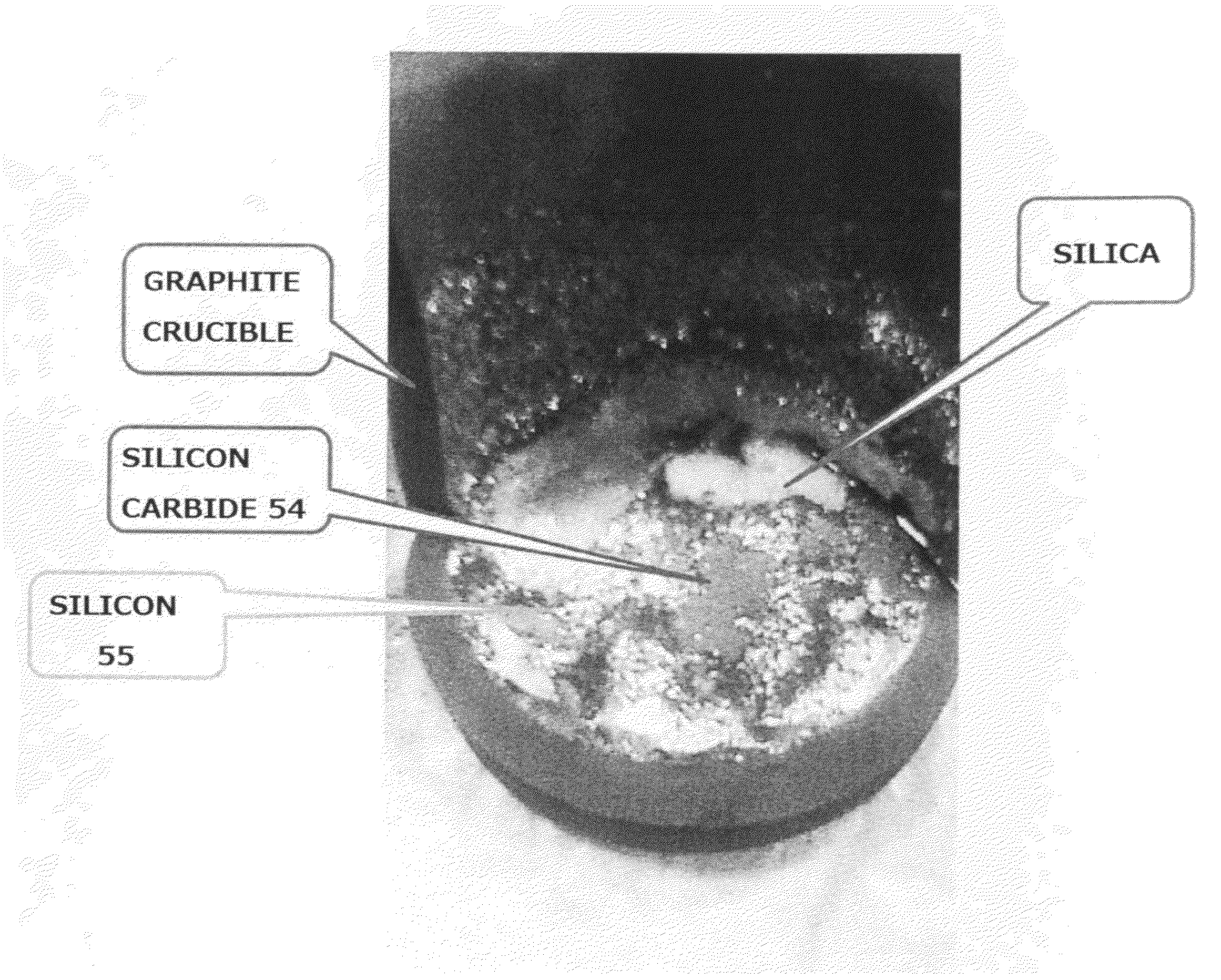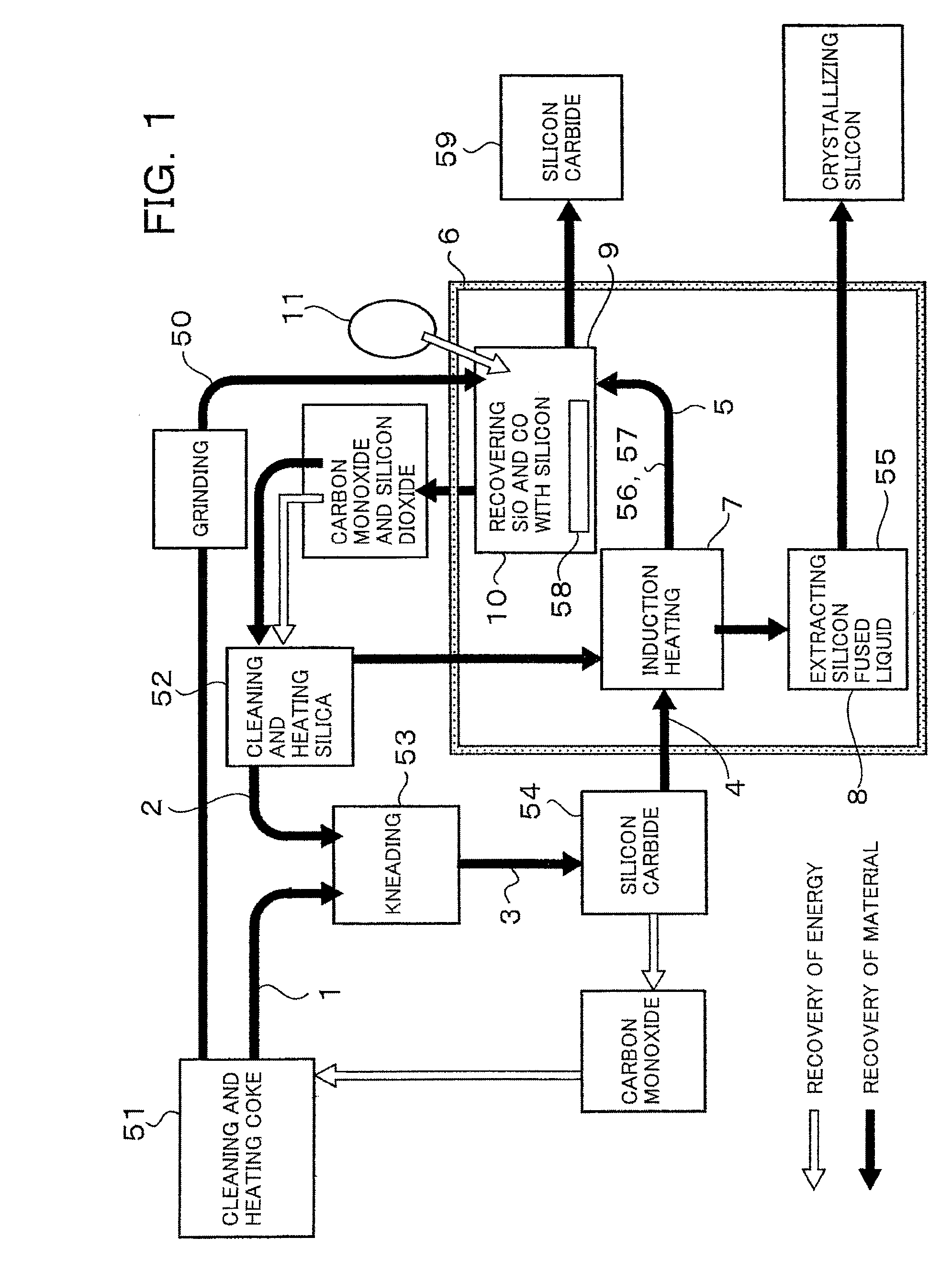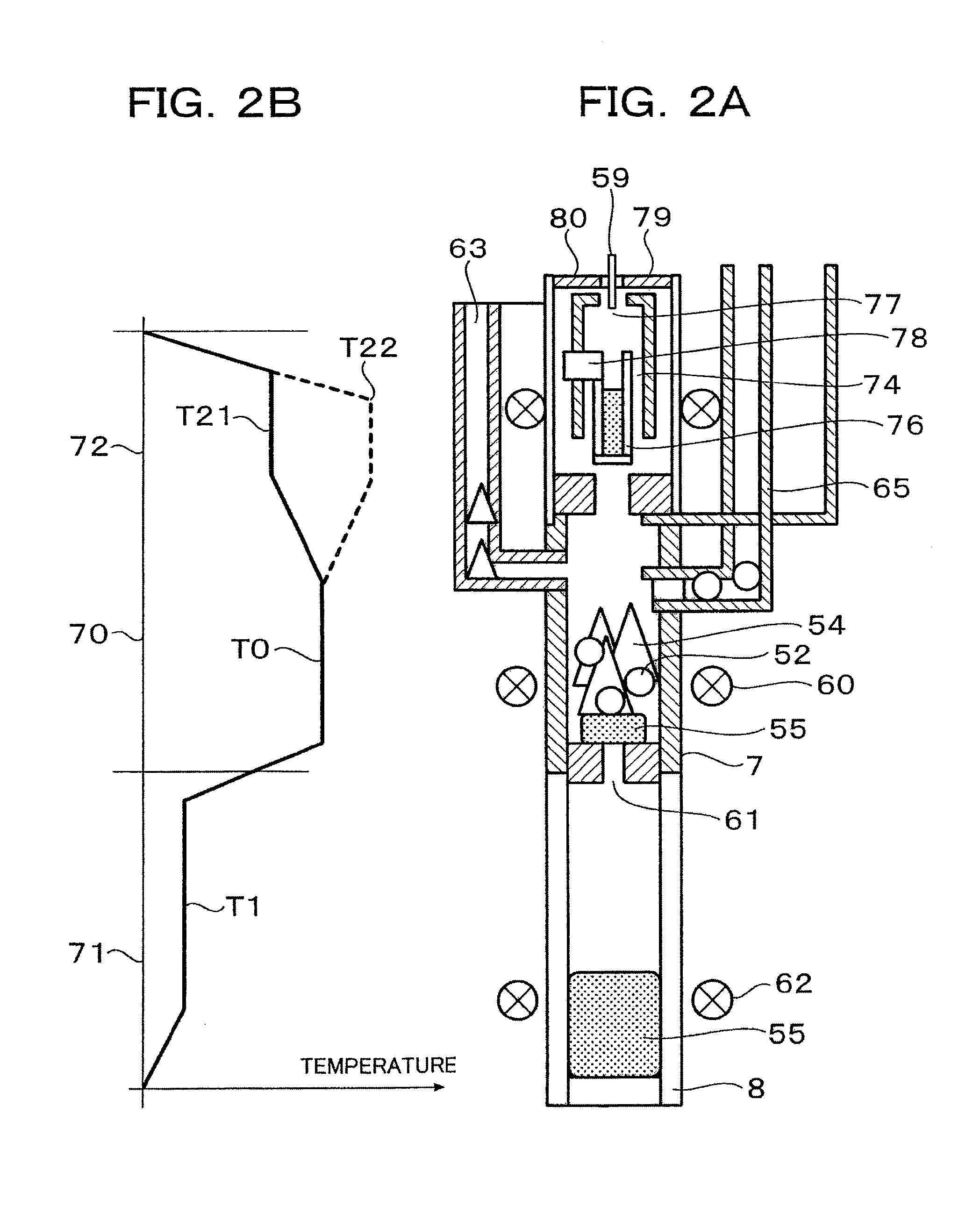Method and System for Manufacturing Silicon and Silicon Carbide
a manufacturing system and technology of silicon carbide, applied in the direction of crystal growth process, polycrystalline material growth, silicon compounds, etc., can solve the problems of high cost, difficult to put materials themselves into arc furnaces, and high electrical energy consumption, so as to achieve stable and continuous purification, reduce waste of energy and materials, and high purity and quality
- Summary
- Abstract
- Description
- Claims
- Application Information
AI Technical Summary
Benefits of technology
Problems solved by technology
Method used
Image
Examples
first embodiment
[0061]FIG. 1 is a schematic diagram for explaining the principle of a method of manufacturing silicon and silicon carbide according to the present invention. FIGS. 2A and 2B are schematic diagrams for illustrating an induction heating reactor used in the present invention.
[0062]Table 1 shows each content of boron, phosphorus, calcium, titanium, iron, nickel and copper which are respectively impurities in coke as material, cleaned coke, silica as material, cleaned silica, silicon carbide and silicon in units of ppm.
TABLE 1Impurities AnalysisMaterialCleanedMaterialCleanedSiliconcokecokesilicasilicacarbideSiliconBoron80.250.1Phosphorus20110.1Calcium101301Titanium30.05400.1Iron200.5100.5Nickel100.550.5Copper100.5100.5
[0063]Coke as material (51) is ground in units of mm beforehand. Table 1 shows results of analyzing impurities in the carbon coke.
[0064]The coke as material is cleaned with aqueous solution. For a clearing solvent, HCN of 0.1 mol is used. After cleaning, the coke is dried a...
second embodiment
[0078]A second embodiment relates to configuration for integrating the above-mentioned reactional process so as to enhance efficiency in utilizing input energy. As shown in FIG. 2A, a basic process is the same as the basic process in the first embodiment and continuous production is aimed at. Heating is made using a coil (60) for induction heating according to a high-frequency induction method. Silicon carbide (54) is put into a crucible for heating (7) via a conduit tube (63). Silica (52) is put from the crucible for heating (7) through a conduit tube (65) into a silicon holding / solidifying crucible (8) through a silicon extracting hole (61). Hereby, silicon (55) is recovered.
[0079]The above-mentioned reactor is controlled to be temperature distribution at three stages. FIG. 2B shows the temperature distribution. An uppermost stage is equivalent to a reactor for growing silicon carbide (9) and the temperature (T2) is 1500 to 2500° C. A middle stage is equivalent to the crucible (7)...
third embodiment
[0085]In the above-mentioned embodiments, the multistage furnace in which the reactors are vertically arranged is used, however, as reactive gas is caused vigorously upward in the reactor at the uppermost stage, the surface of the wafer may be covered with silica when the wafer for recovering silicon carbide is put. To address this problem, a multistage furnace in which reactors are laterally arranged is provided. FIG. 4 shows the multistage furnace in the third embodiment. Carbon monoxide and silicon monoxide respectively caused from a crucible for heating (7) are laterally led. A surface of an input wafer can be prevented from being covered with silica by laterally arranging the reactor. Besides, as the reactor is laterally extended, more carbon monoxide and more silicon monoxide can be recovered.
[0086]For heating means, induction heating is used, however, it need scarcely be said that means such as electric resistance heating can be adopted.
[0087]In the present invention, high-pu...
PUM
| Property | Measurement | Unit |
|---|---|---|
| temperature | aaaaa | aaaaa |
| temperature | aaaaa | aaaaa |
| thickness | aaaaa | aaaaa |
Abstract
Description
Claims
Application Information
 Login to View More
Login to View More - R&D
- Intellectual Property
- Life Sciences
- Materials
- Tech Scout
- Unparalleled Data Quality
- Higher Quality Content
- 60% Fewer Hallucinations
Browse by: Latest US Patents, China's latest patents, Technical Efficacy Thesaurus, Application Domain, Technology Topic, Popular Technical Reports.
© 2025 PatSnap. All rights reserved.Legal|Privacy policy|Modern Slavery Act Transparency Statement|Sitemap|About US| Contact US: help@patsnap.com



